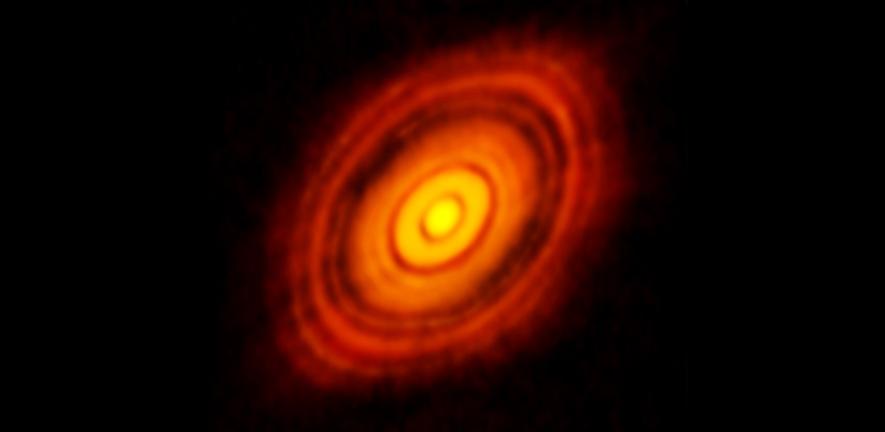Science & Technology, UK (Commonwealth Union) – The formation of planets together with the processes involved have intensified in recent years with the advancement of enhanced observational technology, space exploration and the recent advancement of analytical tools.
New research has focused on little ‘hurricanes’ that are produced in the discs of gas and dust around young stars that can be utilized to evaluate certain characteristics of planet formation, even for smaller planets orbiting their star at wider distances and not within the reach for most telescopes.
University of Cambridge together with the Institute for Advanced Study have formed a technique, utilizing observations of these ‘hurricanes’ by the Atacama Large Millimeter/submillimetre Array (ALMA) to place certain limits on the mass and age of planets in the young star system.
Pancake-like clouds of gases, and dust and ice surrounding young stars, which are referred to as protoplanetary discs is where the procedure of planet formation starts. Through a process referred as core accretion, gravity leading to particles in the disc to stick together, which in time forms a bigger solid body like asteroids or planets. As young planets are produced, they begin to carve gaps in the protoplanetary disc, similar to grooves on a vinyl record.
Even a relatively low in size planet which is as small as one-tenth the mass of Jupiter as indicated by certain recent calculations. This may be able to form such gaps. As these ‘super-Neptune’ planets can orbit their star from a distance more than Pluto orbits the Sun, traditional methods of exoplanet detection are unable to be applied.
In addition to the grooves, monitoring from ALMA have revealed other distinct structures in protoplanetary discs, like banana- or peanut-shaped arcs and clumps. It was previously believed that at least some of these structures were also driven by planets.
Lead author Professor Roman Rafikov from the University Cambridge, Department of Applied Mathematics and Theoretical Physics, and the Institute for Advanced Study in Princeton, New Jersey stated that Something has to be causing these structures to be produced.
“One of the possible mechanisms for producing these structures – and certainly the most intriguing one – is that dust particles that we see as arcs and clumps are concentrated in the centres of fluid vortices: essentially little hurricanes that can be triggered by a particular instability at the edges of the gaps carved in protoplanetary discs by planets,” said Professor Rafikov.
Working together with PhD student Nicolas Cimerman, Rafikov applied this interpretation to produce a method to limit a planet’s mass or age if a vortex is noticed within a protoplanetary disc. The results were accepted for publication in 2 separate papers in the Monthly Notices for the Royal Astronomical Society.
“It’s extremely difficult to study smaller planets that are far away from their star by directly imaging them: it would be like trying to spot a firefly in front of a lighthouse,” says Professor Rafikov.“We need other, different methods to learn about these planets.”
To form the method, the 2 researchers 1st theoretically made calculations for the length of time it would be for a vortex to be formed in the disc by a planet. They then applied these calculations to restrict the properties of planets in discs with vortices, basically setting lesser limits on the planet mass or age, where they referred to these techniques ‘vortex weighing’ and ‘vortex dating’ of planets.
When a growing planet becomes big enough, it commences pushing material from the disc away, forming the tell-tale gap within the disc. As this occurs, material on the outside of the gap gets denser than material from the inside of the gap, and as it goes deeper and the differences in density become big, an instability can be bought about. This instability unsettles the disc which can eventually form a vortex.








